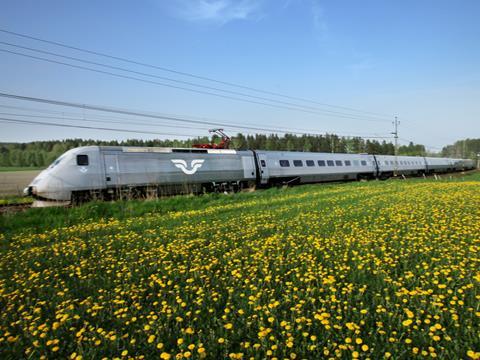
SWEDEN: In a report commissioned by the government, infrastructure manager Trafikverket has recommended that planning for a Y-shaped high speed network linking Stockholm, Göteborg and Malmö should continue because the extra capacity is needed.
The study found that currently approved projects including the 150 km Ostlänken high speed line between Järna and Norrköping and the Mölnlycke – Bollebygd double-tracking will not meet future capacity needs. Enhancements between Göteborg and Borås will not benefit the busy Göteborg – Stockholm corridor until a high speed line between Borås, Nässjö and Linköping is built, and a high speed line to Malmö is needed to make the most of the Øresund and Fehmarn links.
The study outlines options on how to phase the work. The first proposal aims to minimise delivery time, with work on different stages to start as soon as planning is finished.
A second strategy would separate the project into phases. The initial focus could be on either the Stockholm – Göteborg or Stockholm – Malmö corridors, or on the most congested areas. The options would have the same cost, but different cash flows.
Funding options include private finance. Revenue from train operations on the proposed network is estimated at SKr12·9bn in 2030, and Trafikverket argues that an access charge of between 23% and 30% of revenue could sustainably fund 20% to 40% of the SKr140bn investment. This would increase financing costs, but could incentivise efficiency gains through a potential public-private partnership.

















